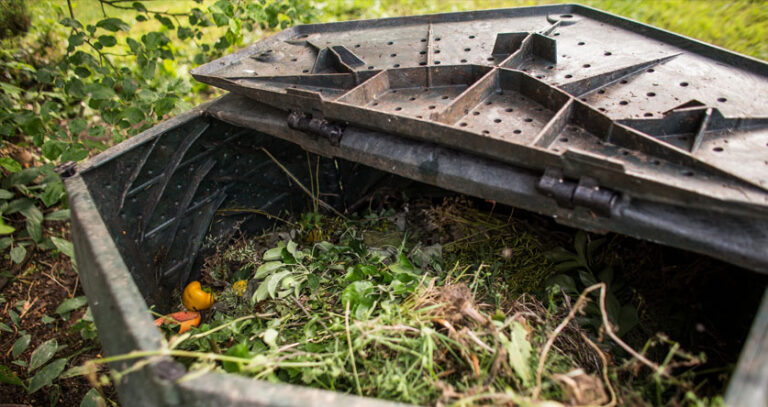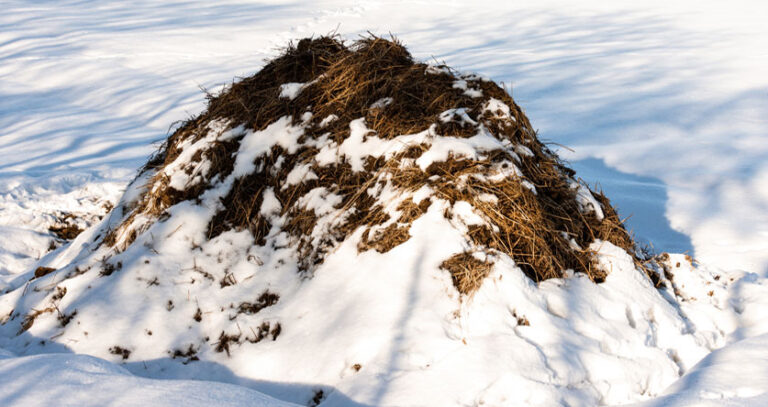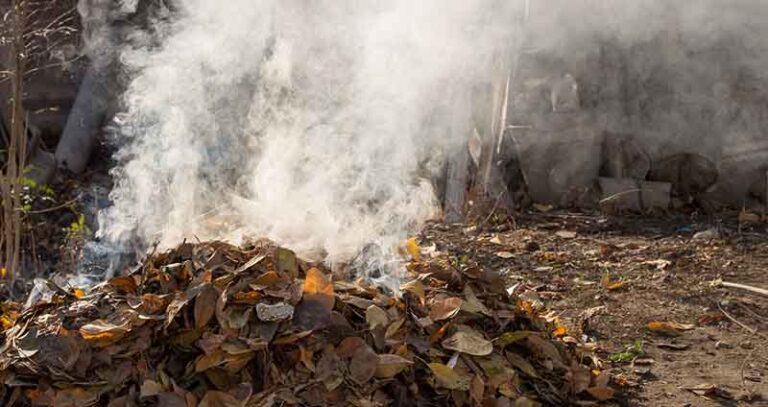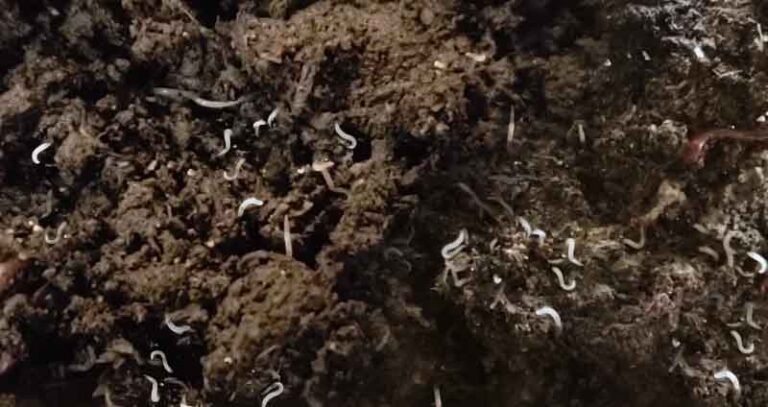Dry Compost Solutions (Is your Compost Bin Too Dry?)
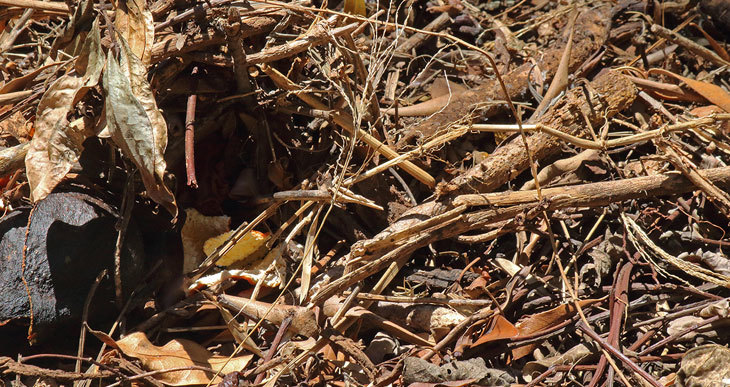
Compost can become dry at times. And as you probably know, this can slow down the process of decomposition, drastically! Below I’m going to talk about how to judge the moisture content of your compost bin, and how to remedy dry compost problems.
So is your compost too dry? If you see very little or no decomposition in your compost pile after a month, and the pile looks and feels dry, then you probably have a problem with the moisture content in your compost bin.
The goal of most gardeners is to make decent compost in a reasonable amount of time. And this is easily possible within one season.
But if your compost is always too dry, you could end up with almost the same stuff you originally put on your pile !
So how do you keep your compost at just the right level of moisture?
Dry Compost – Why it’s a Problem
There are four basic elements necessary for good compost:
- Carbon
- Nitrogen
- Air
- Water
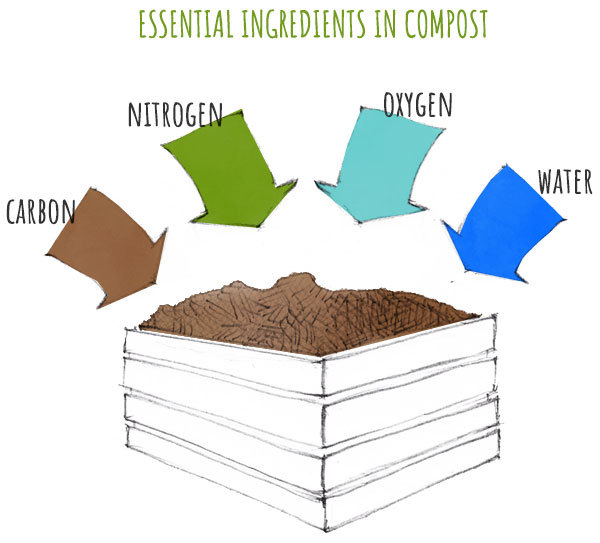
Remember, Carbon rich materials are usually referred to as “browns”, and nitrogen rich materials are called “greens”.
The correct moisture content in a compost pile is essential so that the microbes responsible for decomposition can do their job properly. Just like you and me, all those little critters need water to thrive. And if you keep them happy with the right levels of humidity, you’ll end up with some great compost!
This means that the surface of the waste materials in your compost bin need a thin coating of water so that the microorganisms can feed properly and break down the materials.
However, those composting microbes also need air. Good air circulation occurs when the structure of your compost is well balanced with air pockets which help provide a flow of oxygen. But too much air flow can dry out the materials.
Also, waste materials that are high in carbon tend to be very dry. Whereas materials which are richer in nitrogen are more humid. If your compost is comprised of too many dry carbon type materials then the overall level of moisture in your bin will be low.
People figured out a long time ago that moisture was needed for decomposition – this is why we started drying certain types of foods to help preserve them.
OK… So you’ve probably guessed by now that good composting involves a bit of a balancing act between these 4 basic ingredients.
Dryness is a sign that one of these ingredients is out of balance.
How to Tell if Compost is Too Dry
Getting the right moisture balance can be tricky. Compost needs to be not too dry but at the same time not too wet.
It stands to reason that the outer extremities of your compost will be the driest part of the pile. The outside tends to be more exposed to the environment and the effect of drying winds, plus moisture is more easily released by evaporation.
To better judge the overall moisture level, dig into the center of your pile and take a handful of material from the middle (By the way, I recommend you use gloves for this).
Don’t do this test until your waste materials have had time to start composting – about a week at least. A lack of decomposition is one of the telltale signs that something is wrong, and if you look too soon, you won’t be able to tell if the process is normal.
Now it’s up to you to judge whether the humidity is too wet, too dry, or just about spot on. The following “squeeze test” will help. Grab a handful of compost and squeeeeeeze for about 10 seconds :
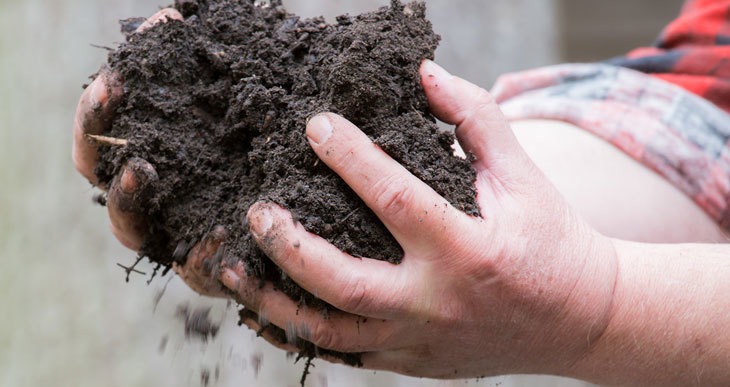
- If the moisture content is spot on, then you should only see a few drops of water when you squeeze the compost in your hands. The materials won’t fall apart when you release your grip, and it’s said they should have the consistency of a “damp sponge”. You should be able to see the first signs of decomposition.
- If it’s too wet it will feel soggy. The material will probably stick together when compressed in your hands. You might even detect a bad smell, meaning that not enough oxygen is circulating and anaerobic microbes have taken over the decomposition process.
- If its too dry it will look and feel dry. When you squeeze the materials together you won’t see any drops of water appear, and the materials will crumble and fall apart easily when you open your hands. If the materials have been in your compost bin for about a week it will be obvious whether they have started to decompose. Materials such as vegetation should first turn yellow, and then brown.
Once you’ve done this test and discovered that your compost is indeed too dry, you can start to look for the reason for this dryness, and seek out a solution…
Why is my Compost Dry? (And what to do)
Dry compost is a fairly common problem, especially if you’re using a traditional wooden sided compost bin (closed compost tumblers tend to suffer less from dryness problems). In open sided wooden bins, the outer layer can become dry because of evaporation during the hot season or exposure to winds. Where you locate a compost bin can have an influence on how dry your compost becomes. If the site of your bin is overly sunny or too windy, you might want to consider changing locations.
Here are a few reasons why compost gets too dry, and what you can do to help resolve the problem.
Too many Browns
Carbon rich materials, especially when dry to begin with, are pretty much resistant to decay! You should aim for a balance of green and brown materials. If you put a lot of dry leaves on your pile without mixing it with some soft, moist, waste materials your compost could remain dry (you have too much carbon and not enough nitrogen rich waste).
Structure Too Branchy
The density and structure of compost needs to be balanced. If the density of the compost is too branchy with lots of air pockets it will dry out quickly because there’s too much aeration. If you have a lot of woody, branchy brown materials try compacting them or cutting them into smaller pieces. In general the smaller size also helps retain heat and speeds up the composting process.
I usually use a shredder like this one to chop things into smaller pieces. (links to Amazon).
Turning compost regularly
Turning compost can help to redistribute moisture in your bin by moving dry materials at the edges to the center of the pile where it’s usually more moist. This is also an opportunity to add some water to the materials that appear too dry.
Reduce the Surface area of the Compost
If your compost pile is wide and flat, you have a large surface area from which water will evaporate. Try making your compost more compact with a lower exterior surface. For example, a good sized cubic compost bin like this one on Amazon keeps you waste materials in a compact volume.
Cover your Compost
Try covering the sides and top of your compost bin with a sheet of cardboard. This will reduce the amount of evaporation and help retain moisture.
Ways to Provide Compost with Water
Things like food scraps and grass cuttings are normally enough to supply compost with enough water during the year. But if you find you’re having problems with dry compost, adding some water to the pile will help provide the right conditions for the composting microorganisms.
Because some people are concerned about the chlorine content of tap water (the chlorine can potentially harm the microorganisms in the compost), you can keep try leaving a bucket of water standing for a few hours, or even a couple of days. This will neutralize the chlorine in water by letting it evaporate.
Alternatively you could collect pure rainwater with a rain barrel. These large containers help you collect rainwater from your roof by sitting them under the downpipe. Because rainwater doesn’t contain any chlorine, rain barrels like this one (Amazon link) are ideal for adding moisture to your compost heap. On top of that you economize on your water bill !
For example, 1 inch (2.5cm) of rainfall and a 1000-square foot (92m2) roof will produce 623 gallons of water!
Troubleshooting dry compost problems
By now you’ve realized that the basics of good compost include a decent mix of green and brown materials, adequate structure to allow air to circulate, and just enough moisture to help the composting microbes do their job efficiently.
Most composting problems can be resolved by changing one of these components.
When I’m trying to solve compost conundrums like dry compost I prefer to adjust one component at a time, wait to see the results of these changes, then readjust my approach as necessary.
This problem solving cycle is illustrated in the diagram below.
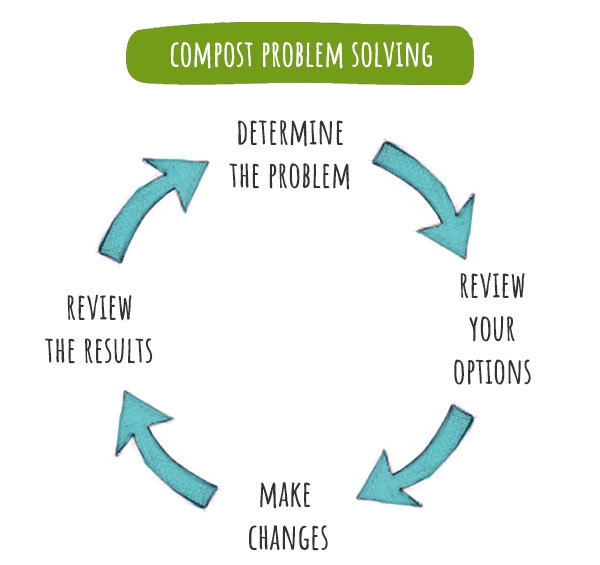
Whatever the state of your compost, whether it’s too dry or too wet, don’t get hung up about making perfect compost. The good news is you’re making something useful out of your organic waste!
Make a few chnages as needed, and before you know it you’ll have nicely maturing compost with just the right level of rotting!


